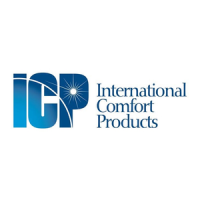8. SEQUENCE OF OPERATION
ELECTRICAL SHOCK HAZARD.
Failure to follow this warning could result in personal
injury, death and/or property damage.
Turn off electric power supply at disconnect switch or
service panel before removing any access or service
panel from unit.
Cooling Operation (PHF324 -42)
With a call for cooling (Y), the indoor fan energizes
immediately where as the contactor energizes after a 5
minute time delay (incase of an initial start up) starting the
compressor and the outdoor fan motor. When the cooling
demand ismet, (Y) de-energizes, shutting the compressor,
indoor fan and the outdoor fan.
Cooling Operation (PHF348)
These units utilize a 2 stage indoorthermostat. With a first
stage call for cooling (Y1), the indoor fan (low stage)
energizes immediately where as the contactor energizes
after a 5 minute time delay (incase of an initial start up)
starting the compressor (low stage) and the outdoor fan
motor. If the low stage operation cannot satisfy the cooling
demand, the second stage cooling (Y2) energizes
switching the compressor into high stage cooling through
energizing an internal solenoid valve inside the scroll
compressor and switching the indoor fan into high stage.
When second stage cooling is satisfied, Y2 de-energizes
switching the compressor and the indoor fan into low stage
cooling. When the low stage cooling demand is met, Y1
de-energizes shutting the compressor, indoor fan and the
outdoor fan.
Heating Operation (PHF324 -42)
With a call for heating (Y), the indoor fan (low stage)
energizes immediately where as the contactor energizes
after a 5 minute time delay (incase of an initial start up)
starting the compressor and the outdoor fan motor. If (Y)
cannot satisfy the heating demand, the auxiliary or back up
heat (W2) energizes. Incase of staged heating, W3 is
energized if the demand is not met. The highest airflow
selected is run while the electric heat is in operation. When
heating demand is met, W3, W2 and Y sequentially
de-energize shutting the compressor, indoor fan and the
outdoor fan.
Heating Operation (PHF348)
With a first stage call for heating (Y1), the indoor fan (low
stage) energizes immediately whereas the contactor
energizes after a 5 minute time delay (incase of an initial
start up) starting the compressor (low stage) and the
outdoor fan motor. If the low stage operation cannot satisfy
the heating demand, the second stage heating (Y2)
energizes switching the compressor into high stage heating
through energizing an internal solenoid valve inside the
scroll compressor and switching the indoor fan into high
stage. The auxiliary or back up heat is controlled by a third
stage (W2). If the demand is not met, W3 is energized in
case of staged heating. When heating demand is satisfied,
W3, W2 and Y2 sequentially de-energize switching the
compressor and the indoor fan into low stage heating.
When the low stage heating demand is met, Y1
de-energizes shutting the compressor, indoor fan and the
outdoor fan.
Scroll Recycle Delay timer
The defrost board is equipped with a recycle delay timer
which will delay the start of the compressor for 5 minutes in
the event of a power interruption. This sequences power
throughout the system and prevents possible reverse
rotation of the scroll compressor. The output of the timer
controls the compressor contactor via a normally open
contact of K3 (T2). The timer starts the delay cycle when the
compressor is turned off by removal of "Y." If application of
"Y" occurs before the timer has expired, the compressor
contactor will not be energized until the timer has expired.
CONTINUOUS FAN OPERATION
With the continuous Indoor fan option selected on the
thermostat, G is continuously energized. Incase of 024 -
042 units, the selected airflow setting is provided. In case of
048 units, the system runs low stage (Y1) airflow for
continuous fan operation.
Defrost Mode
On a call for defrost:
When the defrost sensor closes in the heating mode, there
is a 30, 60, 90 or 120 minute delay before the defrost mode
begins. This delay is selected by the position of the
dipswitches on the defrost board. Defrost interval timing
can be configured by selection switch 1 and 2 on the
dipswitch per the following table: See Figure 7.
Switch 1
ON
OFF
OFF
ON
NOTES:
1. The backup
minutes.
Switch 2 Time
OFF 30 Minutes
ON 60 Minutes
OFF 90 Minutes
ON 120 Minutes
defrost terminate time is fixed at 10
2. The compressor recycle delay timer is 5 minutes.
3. The power interrupt response is minimum 17 msec. to
maximum 35 msec.
4. Quite shift compressor recycle delay is 30 seconds.
In normal defrost mode, the following sequence will occur
after the set delay:
1. Condenser fan off.
2. Reversing valve energized to cooling and auxiliary
electric heat (W2) is energized.
3. After defrost sensor opens or a maximum of 10
minutes; the condenser fan is energized (after 20
seconds) and the reversing valve is de-energized to
the heat mode. Electric strip heat is also de-energized
(after 15 seconds) except as required by the
thermostat.
4.
Should the system indoor thermostat be satisfied
during the defrost cycle, the control will de-energize the

